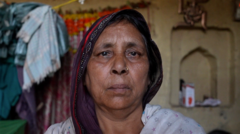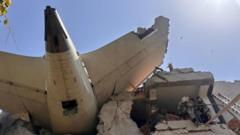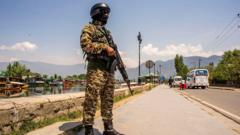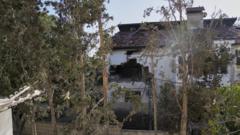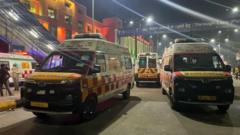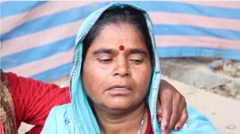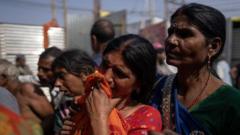The deadly incident at the railway station occurred as crowds surged due to delayed trains heading to the Kumbh Mela, prompting government responses and an investigation.
Tragic Stampede at New Delhi Rail Station Claims 15 Lives

Tragic Stampede at New Delhi Rail Station Claims 15 Lives
A stampede at the New Delhi Railway Station resulted in the deaths of 15 Hindu pilgrims during their journey to the Kumbh Mela.
Fifteen people tragically lost their lives on Saturday following a stampede at the New Delhi Railway Station as throngs of Hindu pilgrims attempted to board trains for the Kumbh Mela, a major religious event in northern India. According to officials, alongside the fatalities, another 15 individuals were reported injured in the incident.
Atishi, the caretaker chief minister of the Delhi region, addressed reporters outside a nearby hospital, shedding light on the chaos that ensued. Indian Prime Minister Narendra Modi extended his condolences via a social media statement, assuring that government forces were mobilized to assist the victims and their families. Meanwhile, Ashwini Vaishnaw, the Union Minister for Railways, announced that an investigation into the stampede was underway.
Prior to the stampede, increased crowding at the station was exacerbated by delays in train services bound for the Kumbh Mela, known as one of the largest religious festivals globally, which has been drawing pilgrims since its commencement in mid-January and is expected to continue through this month. In response, the Ministry of Railways reported that extra trains were dispatched to alleviate the congestion.
Taking place every three years in one of four designated cities, this year’s Kumbh Mela in Prayagraj, Uttar Pradesh, is particularly significant due to its occurrence during a celestial alignment labeled as Maha Kumbh, or Great Kumbh, a rare event occurring only once every 144 years. The festival is traditionally a time when Hindus gather at the confluence of the Ganges and Yamuna rivers, believed to be a sacred site that washes away sins for those who take part in ritual bathing.
Managing such vast crowds poses continuous challenges for government authorities at these religious gatherings. Just last month, a similar incident at the Kumbh Mela resulted in the death of 30 pilgrims. Historical context reveals a concerning pattern; during past Kumbh Melas, significant casualties have occurred, including a devastating stampede in 2013 that claimed 42 lives and another in 2003 that resulted in 39 deaths.
The tragic events underscore the need for stringent measures to ensure safety and manage the influx of attendees at such monumental religious gatherings.

